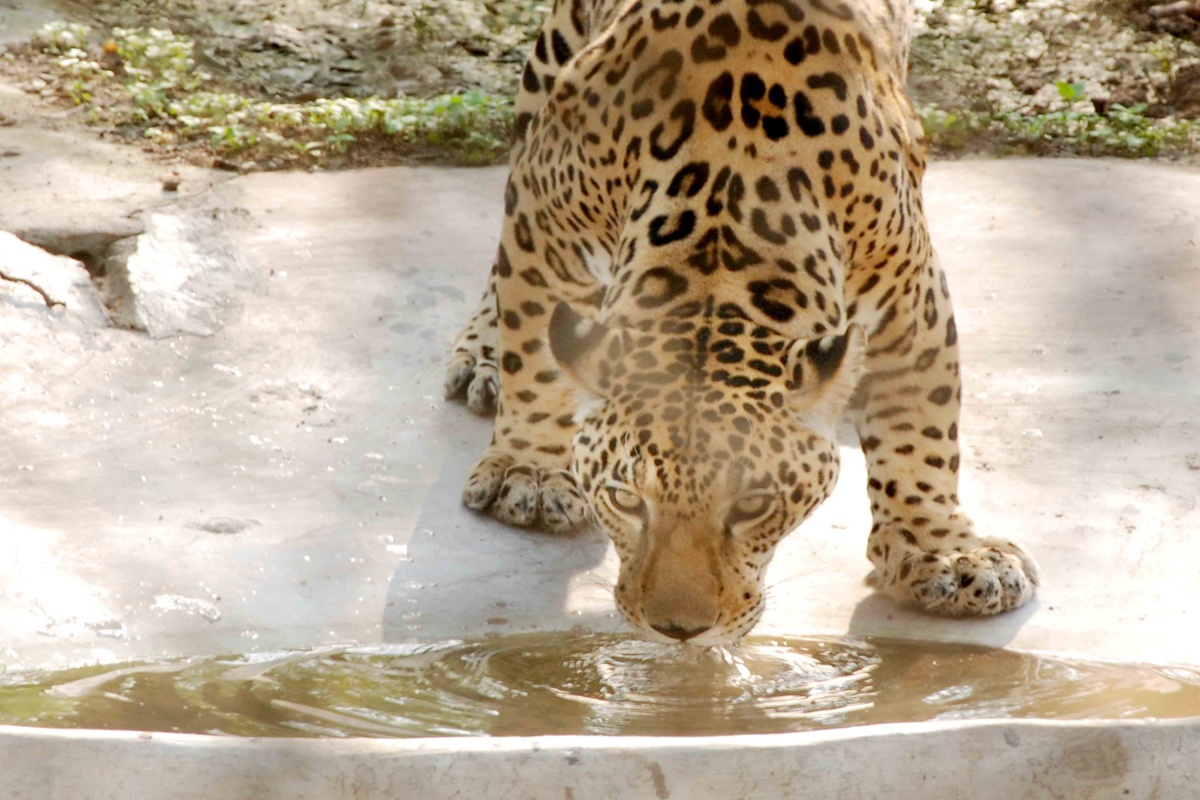Urdi Bazar Jagadhatri Puja Committee spreads message of environmental conservation
The Urdi Bazar Jagadhatri Puja Committee has adopted the theme of saving greenery to protect our environment.
“We hope these findings will inspire renewed cooperation and result in more resident jaguars in the US”.

A Jaguar at the Hyderabad zoo trying to beat the heat on Feb. 27, 2013. (Photo: IANS)
A team of scientists have identified a wide swath of habitat in Arizona and New Mexico that they say could eventually support more than 150 jaguars.
Publishing their results in Oryx — the international journal of conservation — the team says that the central mountains of the two states, which they call the Central Arizona/New Mexico Recovery Area or CANRA, offers new opportunities for the US Fish and Wildlife Service to contribute to recovery of the species.
Authors of the study include scientists from the Wildlife Conservation Society (WCS), Defenders of Wildlife, Center for Biological Diversity, Wildlands Network, Pace University, US Geological Survey, Universidad Autonoma de Queretaro, Bird’s Eye View, IUCN, and Bordercats Working Group.
Advertisement
The multidisciplinary group of scientists compared 12 habitat models for jaguars in Arizona and New Mexico and found an area of habitat the size of South Carolina far from the southern border with Mexico.
This area was not considered in the US Fish and Wildlife Service recovery plan for the jaguar released in 2019, but it left open the possibility of revising the recovery plan boundaries as new information, such as this study, becomes available.
Jaguars are now considered an endangered species across their range, including the US, and state-level protections exist in Arizona and New Mexico. Over the last two decades, a number of male jaguars have been photographed in the mountains.
Jaguars are often associated with tropical habitats such as the Amazon and Central America, but historically they were found as far north as the Grand Canyon.
The last jaguar north of the Interstate-10 highway was killed by a US government hunter in 1964.
Said Eric W. Sanderson, WCS Senior Conservation Ecologist: “There is a lot more potential in the jaguar habitat in the United States than was previously realised. These findings open a new opportunity for jaguar conservation in North America that could help address threats from habitat loss, climate change, and border infrastructure.”
Bryan Bird, Director for Southwest Programs at Defenders of Wildlife and one of the study’s co-authors, said: “This fresh look at jaguar habitat in the US identifies a much larger area that could support many more of these big cats. This expanded area of the Southwest is 27 times larger than the current designated critical habitat.
“We hope these findings will inspire renewed cooperation and result in more resident jaguars in the US”.
Juan Carlos Bravo, Wildlands Network’s Mexico and Borderlands Program Director and a co-author of the study, said: “Jaguar recovery in the northern extreme of its range is of interest to both the US and Mexico, and having this analysis — which clears previous misconceptions about available habitat — is indispensable to make informed decisions for international efforts.”
Michael Robinson of the Center for Biological Diversity, a co-author of the study, said: “It should come as no surprise that the forested Mogollon Plateau, which teems with deer, elk and javelina, now has scientific recognition as good jaguar habitat. This region was the last stand for breeding jaguars after their elimination elsewhere in the US, and these beautiful cats could thrive here again.”
Advertisement